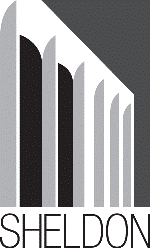Fine and Performing Arts, Hixson-Lied College of

Sheldon Museum of Art: Catalogs and Publications
Date of this Version
2009
Citation
Sheldon Museum of Art, February 6- May 31, 2009
Abstract
Eden is an idealized place where one experiences happiness, harmony and a sense of timelessness. While some believe this can only be experienced after death, others are convinced that the only Eden is the one we currently inhabit and therefore good stewardship is needed in order to sustain it. Photographers have historically captured our evolving planet and have brought to light its beauty as well as its destruction due to human intervention.
The artists in Evolving Eden address the much-discussed topic of the environment and our relationship with our surroundings, using three distinct approaches. While Arno Rafael Minkkinen's spiritual images attempt to eliminate the boundary between self and the external world, Hans Eijkelboom shows us a world of homogenous consumerism in an urban environment far removed from nature. Minkkinen's self-portraits leave those material objects and associations, including clothes, behind. He is the lone person in much of his work. Eijkelboom's subjects strive to obtain individuality through their personal style and dress, but in actuality they become elements in a larger collective. Edward Burtynysky's beautiful yet detached photographs of industrial wreckage capture the environmental consequences of consumer culture and exemplify a lack of responsible management of our natural resources.
Finnish-born American photographer Arno Minkkinen contorts his tall, thin body within pristine, Eden-like environments. Equipped with his lens and without the aid of an assistant, he photographs himself as being in a harmonious, solitary relationship with nature. Minkkinen's approach might best be described as spiritual or transcendental; his body can be seen as a metaphor for the land. For almost 40 years Minkkinen has created black-and-white, large-scale self-portraits, unmanipulated, and developed in his darkroom. They are evocatively beautiful yet serendipitous and witty in their defiance of what seems humanly possible to achieve. They take us to places seemingly unmarred by human intervention and remind us of the ideal to seek a balance with nature.


Comments
Copyright 2009 Sheldon Museum of Art